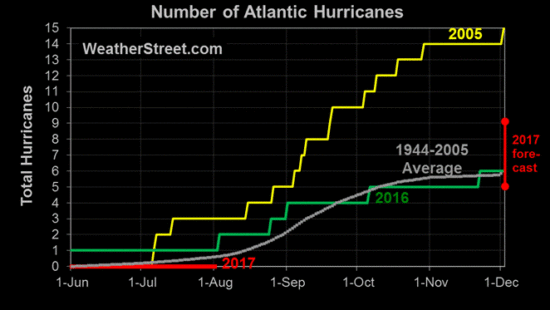Wednesday of this week will mark 4,300 days since the last major hurricane (Category 3 or stronger, 111-129 mph maximum sustained winds) made landfall in the U.S.
That’s almost 12 years.
The last major hurricane to make landfall in the U.S. was Wilma striking Florida on October 24, 2005, one of several strong hurricanes to hit the U.S. that year. The unusual hurricane activity in 2005 was a central focus of Al Gore’s 2006 movie, An Inconvenient Truth, in which Mr. Gore suggested 2005 was going to be the new normal. As you might recall, Gore went on to receive a Nobel Peace Prize for helping to raise awareness of the severe weather dangers from global warming.
Instead, the bottom dropped out of Atlantic hurricane activity after 2005. The “drought” of landfalling U.S. major hurricanes continues, and as seen in this graphic from WeatherStreet.com, no hurricanes have yet formed anywhere in the Atlantic basin in 2017, despite the forecast for an above-normal hurricane season:

 Home/Blog
Home/Blog




